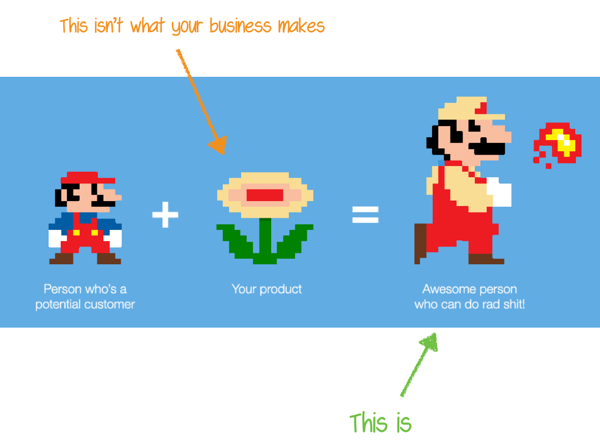
Samuel Hulick is a long time UX consultant with an intense focus on user onboarding. This article originally appeared on Inside Intercom.
Want more people to adopt your product? Make sure you know what progress looks like in your user’s life, not just on their screen.
Having a stellar user adoption rate is a beautiful thing. Converting users at a higher rate drives down your cost of user acquisition, which in turn stretches your marketing resources even further. It also increases the likelihood that people stick around longer, driving up average lifetime value, and letting you invest your product resources more strategically.
The secret to getting there? First, identify the must-have experience that keeps people coming back, and then make sure new users experience it.
Ensuring your new users get that experience is a responsibility put on onboarding, but onboarding itself is rarely designed to deliver it. Rather than relentlessly focusing on progressing the user to success, onboarding workflows seem content to simply introduce the interface and then call it a day.
This is a shame, because in order for an onboarding experience to answer its higher calling, it has to go beyond moving people through a product tour. The story you build your onboarding experience on shouldn’t be about your user interface, it should be about your user.
In order to be building on solid ground, that story — the one beginning and ending with the user — needs to be thoroughly understood.
Setting the stage for successful onboarding
When you boil it down, onboarding is really all about changing people’s behavior. Your signups are frustrated with the way they’re currently doing something and are hoping your way of doing things is better (or else they wouldn’t be signing up).
Onboarding strives to make that behavioral switcheroo a successful one for as many people as possible.
Onboarding experiences, when working well, are less like instruction manuals for weight benches and more like personal trainers: they don’t stop at merely showing you how the equipment is used, they make sure you get all the way to attaining your fitness goals.
So it goes for user onboarding: in order for it to be successful, it must ultimately engender success in others.
So, long before you begin to weigh your interface options (“should I go with an intro video or a series of tooltips?”), let’s make sure you’re super clear on what your users are trying to get away from, where they want you to take them, and all the twists and turns in the road from one to the other.
Why are people ‘hiring’ your product?

Let’s begin where your users begin: the situation they don’t want to be in anymore. In the “personal trainer” metaphor, this is the last time the person stares in the mirror poking at their flabby gut before finally deciding to do something about it. It’s the specific, burning motivation that’s driving them to adopt a new way of doing things.
Clayton Christensen, innovation expert and bestselling author of The Innovator’s Dilemma, calls this motivating situation the “Job to Be Done.” The essence of the concept is that products are acquired from a viewpoint very similar to a company opening up a position in their organization: recognizing that there’s a need to grow or adapt, and addressing that need by making a “hire” to fix it.
For example, someone may encounter an “I need to unwind” situation after a long day at work and “hire” Netflix to help relieve some stress, or a startup may find themselves in a “we need to be better at talking to our users” situation with their product and “hire” Intercom to get the lines of communication flowing freely.
Frustrating situations open up new “employment” opportunities, and intimately familiarizing yourself with them helps make sure your user onboarding nails the “interview.” You can’t discover them through demographic research or behavioral data, however — in order to fully understand what drives your users, you have to go straight to the source with interviews.
Who should be interviewed, and when?
Whenever possible, interview people who have just crossed the finish line to becoming highly-engaged users. Chris Spiek and Bob Moesta, Jobs-to-Be-Done practitioners and co-founders of the Re-Wired Group, refer to this as the “switching moment.”
If you charge for your product, it’s the moment people start paying. If you don’t, you may need to come up with your own engagement indicator and use that as the point of introduction.
Why is the timing important? If you’re approaching users before they’ve made the switch, you run the risk of interviewing a lot of people who won’t actually stick with your product.
Approaching them too long afterward, though, means they’re likely to have already forgotten what drove them to change things up to begin with.
People who have recently switched are proven customers but still have the emotional memory of the whole process readily available for recall, which is exactly what you’re looking for.
Where does their story actually begin?
When conducting your interviews, try to keep the participants focused on their actual actions and feelings when making the switch. People are notoriously unreliable at predicting their future behavior and attitudes, so framing everything around what really happened (not what usually happens, or could have happened) during their onboarding experience keeps your emerging story tethered to the realm of reality.
Asking for specifics also helps transport people back into the actual moment, which brings up lots of super valuable accessory details. Rather than asking them if they had an easy time with setup or not, get to specifics by asking which part was the trickiest, and deeply explore that moment.
By way of a real-world example, while someone might not have a lot to add to “are you a safe driver?”, asking them to specifically recall the last time they were pulled over would immediately thrust them into a story rich with emotional details.
Also, be sure to track every story’s breadcrumb trail as far back as you can get your interviewee to remember. The narratives that lead up to our decisions can be surprisingly long — much longer than the surface would show.
A journey to a car dealership may at first seem to begin with seeing a newspaper ad, but after even a little bit of digging it could turn out to have really started with a funny noise in the engine two months before. Onboarding always begins with the motivation to change, which always takes place before the user ever pulls up your site.
If your user onboarding story was a movie, your product itself wouldn’t appear until long after the action was already underway (remember, the user is the star of this show, not you). Retracing their steps — especially the ones before your product comes into the picture — provides you with the context you need to kick the transition off right.
What has to happen for the adoption to succeed?
Now that the starting place is so well-explored, have your interviewee recount their steps forward all the way to the moment they became fully up and running with your product. It’s very unlikely to have been a direct path, so encourage them to meander or head off on seemingly-unrelated tangents — many times, those provide the richest insights of the entire conversation.
For example, if your product’s setup process needs the user to import a bunch of data for everything to be fully up and running, urge them to take the scenic route in describing every little detail of how they accomplished it.
Did the numbers come from a spreadsheet? If so, was it in Excel or Google Docs? How many sheets did it have? Did they import the data by uploading the file or by pasting it in by hand? How did the numbers even get into the spreadsheet to begin with, and how long did it take to be populated?
Cataloging the external tedium involved in getting set up with your product not only provides you with plenty of low-hanging fruit for making the transition much easier for your new users, it also gives you a clearer picture of all the pressures they’re dealing with that surround the (probably rather small) time they actually spend inside your product.
In fact, there’s one kind of pressure that stands heads above the others, and goes criminally overlooked in most product strategies: people pressure.
Who else has to be successful for the adoption to succeed?
While it’s crucial to understand what makes your “onboardee” tick, there’s no need to stop there. People are social animals, and understanding an individual’s motivations often requires understanding the motivations of those that surround them.
Nowhere is this truer than in the land of business software. Budgets need to be approved, technology needs to be reviewed, processes need to be changed, and colleagues need to be trained. Understanding what motivates the budget-holders and technology-reviewers in your user’s life can help you ensure things get past all those surrounding parties as quickly and easily as possible.
If it comes up in interviews that their higher-ups wanted an explanation of why it’s worth the investment, arming future users with a professional and credible PDF outlining the ROI of your product will beat leaving them to come up with reasons on their own every time.
If you frequently hear that the IT department nearly scrubbed the deal with their technical review, you can save untold others from the chopping block with a well-timed offer for a guided tour under the hood.
Ask as many questions as possible about who applied pressure to the process, and what pressures those people were dealing with themselves. Teeing your user up for success doesn’t — and shouldn’t — have to exist solely within the confines of your product’s interface.
Go forth and listen!
The insights for the basis of an exceptional user onboarding experience are out there, but won’t fall into your lap from a Google Analytics chart or an open text box tacked onto an NPS survey. To uncover the real story — the powerful, driving, emotional one — you have to access the person behind the user.
In fact, I want you to do this so much I’m sharing a time-tested email of mine so you can get started right away. Send this to people the day after they become customers (or cross the engagement proxy):

Not everyone will reply, of course, but I guarantee that some will, and the hardest part of interviewing — getting people to talk with you — will be covered. Once you have them on the line, make sure to remember these points:
- In order for your onboarding to succeed, it has to make your users successful
- People sign up for products because they’re frustrated with their current situation
- The frustrations are the key early motivators, and are uncovered by interviewing people who have recently made the switch
- The interviews should always skew towards real events and feelings, rather than abstract or presumed ones
- Track the initial motivations back as far as possible, then move forward with as many specifics as possible
- Take the scenic route — color commentary is a very valuable resource
- Catalog & overcome outside stumbling blocks and hurdles, be they software or people
- The story starts at “frustrating situation” and ends at “successful situation” — make sure the dots all connect!
Interviewing isn’t easy, but it’s a heck of a lot more enjoyable than pouring tons late nights and hard-earned dollars at a product that’s sucking wind. Here’s to your onboarding (and your users’) success!
For more on how to approach your user onboarding design to maximize throughput and delight your users, check out the e-book The Elements of User Onboarding.
Read next: Effective Web messaging: How to say the right thing at the right time
Get the TNW newsletter
Get the most important tech news in your inbox each week.







